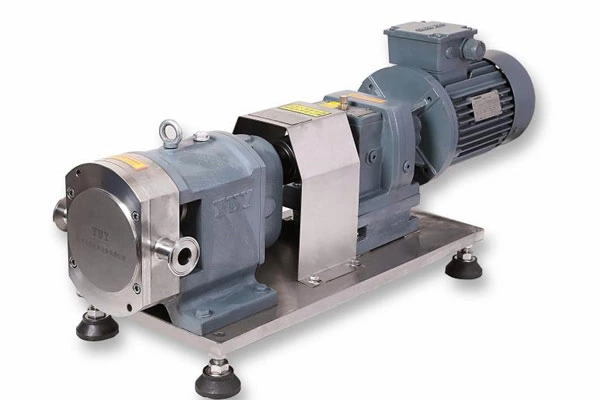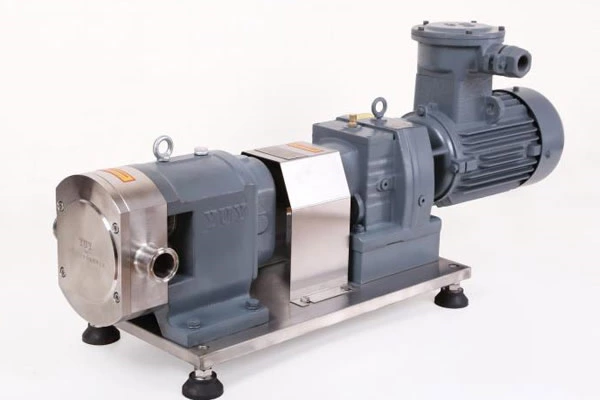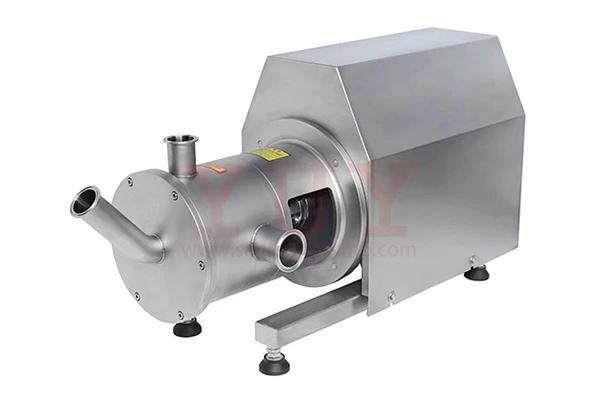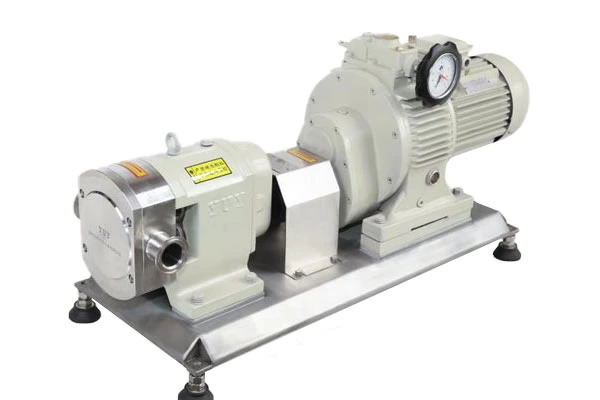Reasons Why Sanitary Rotary Vane Pump Does Not Produce Water
Each of the two symmetrical working chambers of Sanitary Rotary Lobe Pump is equipped with an elastic diaphragm 6. The connecting rod connects the two diaphragms into one. After the compressed air enters the air distribution valve 3 from the air inlet connector 1 of the sanitary rotary vane pump, it pushes the diaphragms in the two working chambers, driving the two diaphragms connected by the connecting rod to move synchronously. At the same time, the gas in the other working chamber is discharged from the back of the diaphragm. Once the end of the stroke is reached. The air distribution mechanism automatically introduces compressed air into the other working chamber, pushing the diaphragm to move in the opposite direction, thus forming the synchronous reciprocating motion of the two diaphragms. Two one-way ball valves 4 are set in each working chamber. The reciprocating motion of the diaphragm causes the change of the volume of the working chamber, forcing the two one-way ball valves to open and close alternately, thereby continuously sucking and discharging the liquid.
The main reasons why the sanitary rotary vane pump does not discharge water are:
1. The diaphragm of the sanitary rotary vane pump is too tight, causing the plunger diaphragm to fail to start, so that the sanitary rotary vane pump cannot run; solution: loosen the screws.
2. There is too much water or water vapor in the air compressor and its pipelines, which causes the air compressor to be unable to drive the sanitary rotary vane pump to operate; Solution: Remove the moisture in the air compressor and its pipelines.
3. The air compressor provides insufficient pressure, and the sanitary rotary vane pump manufacturer believes that it is not enough to drive the normal operation of the sanitary rotary vane pump; Solution: Increase the pressure of the air compressor. Generally, the sanitary rotary vane pump requires a normal pressure of 5-7 kg.
4. The air distribution valve of the sanitary rotary vane pump is damaged; Solution: Replace the air distribution valve.
5. The diaphragm in the sanitary rotary vane pump is broken or damaged; Solution: Replace the diaphragm.
6. The main shaft and "O" ring of the sanitary rotary vane pump have scratches, wear and flattening marks; Solution: Replace the main shaft.
7. The filter, pressure regulating and lubrication device of the sanitary rotary vane pump and the air inlet filter are blocked; Solution: Remove the blockage.
The sanitary rotary vane pump has no rotating parts, no shaft seals, and no diaphragms to completely separate the pumped medium from the moving parts and working medium of the pump, and the transported medium will not leak out. Therefore, when pumping toxic, volatile or corrosive media, it will not cause environmental pollution or endanger personal safety. No water is required, the suction distance is up to 7m, the head is up to 50m, and the outlet pressure is not less than 6kgf per square centimeter. The flow is wide and the passing performance is good, allowing the largest particles to pass. When the diameter of the sanitary rotary vane pump reaches 10mm, the wear on the pump is minimal. The head and flow rate can be adjusted steplessly through the air valve opening. (The air pressure is adjusted at 2-8kg/square centimeter) No electricity is required, and it is safe and reliable to use in flammable and explosive places.
The sanitary rotary vane pump has a simple structure and few vulnerable parts. The pump has a simple structure and is easy to install and maintain. The medium transported by the sanitary rotary vane pump will not contact the gas distribution valve, connecting rod and other moving parts. Unlike other types of pumps, the performance will gradually decline due to the wear of the rotor, piston, gear, blade and other parts. It is easy to use and reliable. To start and stop the pump, you only need to open and close the gas valve. Even if it runs for a long time without medium or stops suddenly due to unexpected circumstances, the pump will not be damaged. Once overloaded, the sanitary rotary vane pump will automatically stop. It has self-protection performance and can automatically start and run when the load returns to normal.








